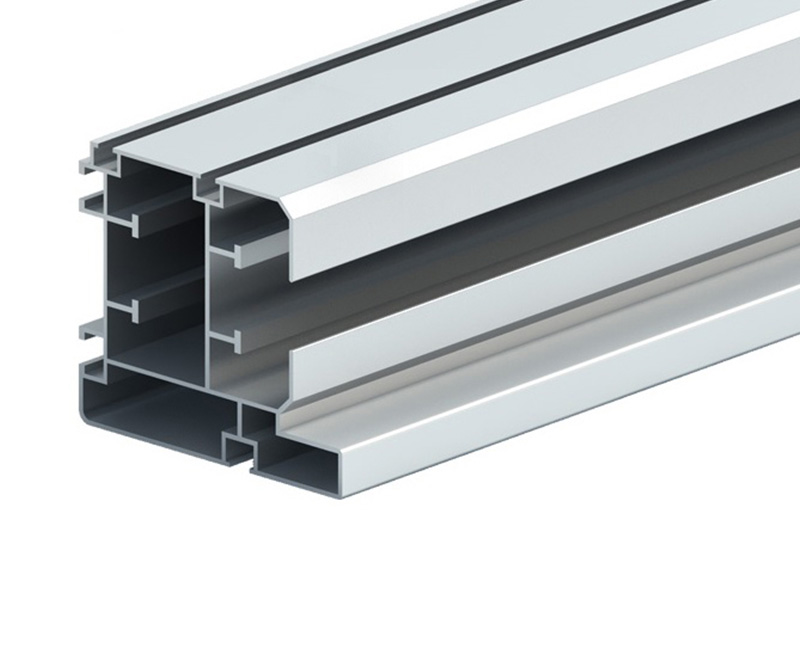Everything you need to know about aluminum profiles
1. Characteristics of Aluminum Profiles:
Lightweight and High Strength: The density of aluminum profiles is relatively low, yet their strength is high. This makes aluminum an ideal lightweight structural material. Under the same load conditions, using aluminum profiles can significantly reduce the overall weight of a structure, enhancing its stability and safety.
Excellent Corrosion Resistance: Aluminum profiles possess excellent corrosion resistance, maintaining their performance even in humid and corrosive environments.;
Good Electrical and Thermal Conductivity: Aluminum profiles exhibit strong electrical and thermal conductivity, making them suitable for electrical equipment and heat conduction installations. Their electrical conductivity ranks just below that of copper.;
Easy to Process and Form: Aluminum profiles can be easily processed to meet various shapes and sizes. They can be cut, drilled, bent, welded, and more with relative ease.;
Environmentally Friendly and Recyclable: Aluminum profiles are recyclable metal materials with a high recycling rate, making them environmentally friendly.;
2. Types of Aluminum Profiles:
Understanding the various types of aluminum profiles and their applications will make it easier to design specific program details.;
Classification by Purpose: Building aluminum profiles, radiator aluminum profiles, industrial aluminum profiles, rail vehicle structure profiles, mounted aluminum profiles, etc.;
Classification by Alloy Composition: Based on different alloy compositions, aluminum profiles can be categorized into grades like 1024, 2011, 6063, 6061, 6082, and 7075.;
Classification by Applications:
General profile series, manipulator profile series, double speed chain profile series, lean pipe profile series, European standard series, national standard series, protective fence series profiles, etc.;

3. Connection Methods for Aluminum Profiles:
There are several common connection methods for aluminum profiles. These methods can be referenced for design purposes.:
3.1 Angle Code Connection: Multiple aluminum profiles can be connected using angle codes, which come in different angles such as 90° , 45° , or 135° to accommodate various connection requirements.;
3.2 Screw Connection: This method involves using screws to fasten aluminum profiles together. It is a simple and quick connection method, ideal for straightforward profile assemblies.
Related Articles:
Aluminum Profile Production Process
The Difference Between Industrial and Architectural Aluminum Profiles
3.3 Notch Connection: Connection can be achieved using the notches of aluminum profiles such as L-shaped corner groove connectors, high-strength corner groove connectors, etc. This method provides high strength and stability.
3.4 Welding Connection: In scenarios requiring high-strength connections, aluminum profiles can be welded together. However, it is essential to note that not all aluminum profiles are suitable for welding; selection must be based on specific material and process needs.
4. Principles for Selecting Aluminum Profiles:
When selecting aluminum profiles, follow these principles::
Choose Based on Application Scenarios: Different application environments have specific performance requirements for aluminum profiles. Select appropriate types and specifications based on real-world needs.;
Consider Strength and Hardness: Choose materials with adequate strength and hardness based on the pressure and stress on the aluminum profile to ensure structural safety and stability.;
Evaluate Corrosion Resistance: Aluminum profiles used in corrosive environments must offer good corrosion resistance to prolong their service life.;
Consider Processability: Select appropriate aluminum profiles according to processing requirements to facilitate subsequent operations like cutting, drilling, and bending.;
Factor in Cost Considerations: Aim to select aluminum profiles that offer a high cost-to-performance ratio, minimizing expenses while meeting usage requirements.;
5. Applications of Aluminum Profiles:
Construction Field:
Aluminum profiles are extensively used in construction applications including windows, doors, curtain walls, and various indoor and outdoor decorations.;
Industrial Field:
Industrial aluminum profiles are vital in the areas of mechanical automation, production lines, equipment racks, and more.;
Transportation Field:
Aluminum alloy profiles designed for rail vehicle structures are key materials in the rail transit industry, used in manufacturing vehicle bodies, connections, and other components.


